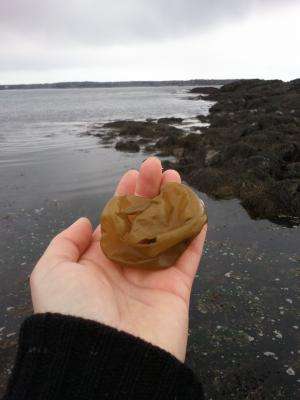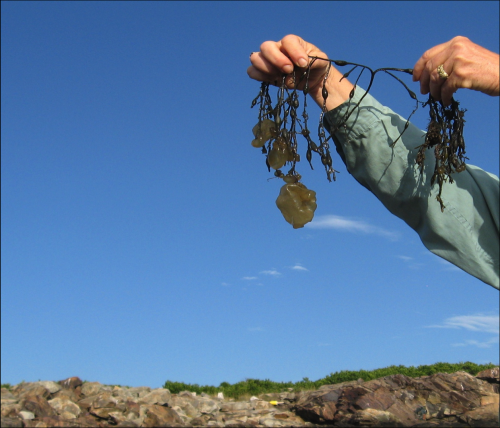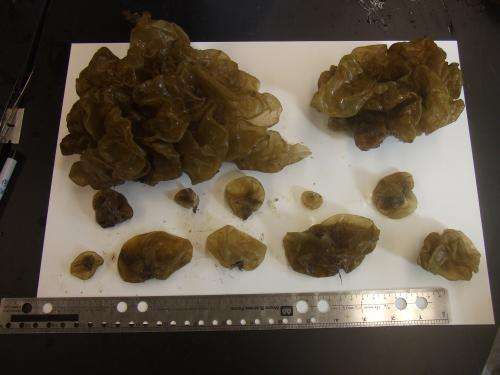Scientists document first expansion of 'sea potato' seaweed into New England

There's a new seaweed in town, a brown, bulbous balloon befitting the nickname "sea potato." Its New England debut was spotted by two University of New Hampshire plant biology graduate students; now researchers are keeping a close eye on the sea potato's progress to determine whether there is cause for alarm.
UNH graduate students Lindsay Green and Hannah Traggis discovered the rapid southern expansion of Colpomenia peregrina, also known as sea potato or oyster thief, during a SCUBA diving trip in Kittery, Maine, in the summer of 2011. "We saw this big brown beach ball," says Traggis, who co-authored a study of their findings in the journal Botanica Marina.
The seaweed was documented in Nova Scotia in the 1960s but never on the U.S. Atlantic coast until Green and Traggis's diving trip in 2011. In the paper, the authors explain that when they reevaluated photographs sent from concerned individuals in mid-coastal Maine, they confirmed that the seaweed had appeared there in 2010. In the summer of 2012, the sea potato had spread as far south as Sandwich, Mass., on the north shore of Cape Cod.
"It's just blown up," says Green, a Ph.D. student from Piermont. "It's expanded all the way to the Cape in just two years." While C. peregrina prefers cooler waters, the researchers anticipate that it could extend its range farther south.

Ranging in size from just a few centimeters to the size of a soccer ball, the sea potato is a greenish to yellowish brown sac that fills with air or water. It is epiphytic – it grows on other plants – and it's quickly become prominent in the rocky intertidal zone of the Gulf of Maine attached to common seaweeds like rockweed or Corallina officinalis, also known as coral weed.
Colpomenia peregrina looks strikingly similar to a native species, Leathesia marina, or sea cauliflower. Sea potato, however, is smoother, thinner and greenish-light brown while sea cauliflower tends to be smaller, stiffer, brain-like and dark brown; the researchers turned to microscopy and DNA analysis to make a definitive identification.

Traggis and Green are quick to characterize the sea potato as an introduced, not invasive, species in New England waters. Nonetheless, its rapid expansion into the Gulf of Maine raises concern. The seaweed earned its "oyster thief" nickname after its introduction to France in the early 1900s led to significant damage to the oyster industry.
"The seaweed was like a balloon attached to the oysters. Literally, whole oyster beds disappeared because they floated away," says Traggis, a master's student from Buzzards Bay, Mass. While no negative effects have been reported on New England's shellfish industry, the researchers note that the region's oyster industry is valued at $117.6 million.
The researchers and other scientists are keeping a close eye on C. peregrina for other ways it could alter the natural community and native flora. "It occurs in high density on many local seaweeds, and it's competing with them for space, nutrients and light," says Green. "In the summer it's becoming a bit of a nuisance."
As the warming days bring more people to New England's shoreline, "we want people to know that this is here and that there are researchers interested in learning about it," says Green, adding that while there's no need for citizens to eradicate the sea potato if they find it, they shouldn't move it around. They encourage beachcombers – the natural beach balls are likely to attract the curiosity of kids in particular – to contact the Department of Marine Resources (Maine: http://www.maine.gov/dmr/index.htm; New Hampshire: http://www.wildlife.state.nh.us/marine/; Massachusetts: http://www.mass.gov/dfwele/dmf/) when they find C. peregrina.
Provided by University of New Hampshire
















